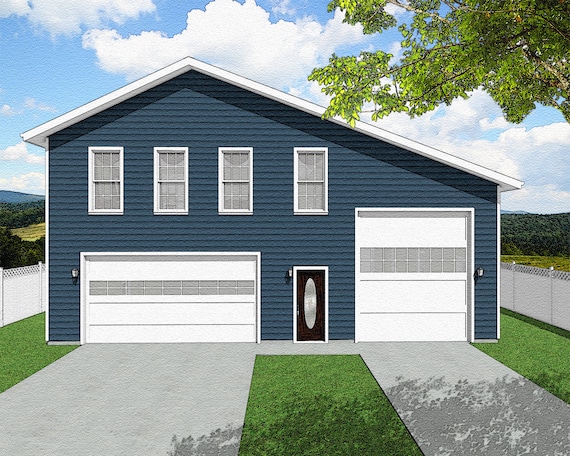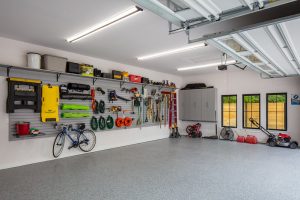
A garage conversion with a loft is a great option to increase living space in your home. It can be used to create a family room or home office. You may be able to save money by paying for the project in instalments. Speak to a professional first if you are interested.
A garage conversion with loft must be planned carefully to maximize light and ventilation. Protecting your furniture and belongings from damp can be done with an insulated roof window. The best part is that a loft has a much easier access than an attic.
It is important to consider the materials used in your construction. For example, you'll want to use bricks that are in harmony with the rest of your house. You should also ensure that the windows in the garage are the right size. Choosing the right lighting will make the room look and feel good.

You can expect to spend between PS10-20k depending upon the size of your garage for a complete conversion. You will need to add insulation, soundproofing and possibly a kitchen. Complex conversions will however cost more.
Plan ahead. A homeowner must also be familiar with the laws and regulations in the new area. Certain areas will require you to get a building license. When you do, it is a good idea to seek the advice of a surveyor at the local council.
Although garage conversions are not required for planning permission in most cases, it is recommended to have one. A Lawful Development Certificate is a great idea if you are planning to sell your home soon. The Lawful Development Certificate will prove to potential buyers that your home has been converted legally and permitably.
Another smart move to make is to construct a separate entrance for your garage. You can make sure that your car isn't in the same area as your clothes. You'll also have a safe, convenient escape from the outdoors.

Structural changes are one of the most expensive parts of a garage conversion. To create an open-plan space, you will need to remove a few walls. It is important that your roof meets minimum fire resistance requirements. You should also have at least two layers of 150mm thick glass fiber quilts on your pitched roof.
You should also make sure you install trickle exhausts in your garage doors' frames. Trickle vents allow for ambient airflow and ventilation in the space. You should also consider installing the right amount of insulation on your floor.
As long as it is done right, a garage conversion with a loft is a good idea. Consider the materials you used, the most efficient features and the best ways to use the space.
FAQ
What is the difference between renovation and remodel?
A remodel is major renovation to a room, or a portion of a rooms. A renovation refers to minor changes made to a particular room or area of a given room. Remodeling a bathroom is a major job, but adding a faucet to the sink is a minor one.
Remodeling entails the replacement of an entire room, or a portion thereof. A renovation is only changing something about a room or a part. A kitchen remodel might include the replacement of countertops, sinks as well as appliances, lighting, and other accessories. An update to a kitchen could involve painting the walls or installing a new light fixture.
How long does it usually take to remodel your bathroom?
Remodeling a bathroom typically takes two weeks to finish. However, this varies greatly depending on the size of the project. Some jobs, such installing a vanity and adding a shower stall, can take only a couple of days. Larger projects like removing walls and installing tile floors or plumbing fixtures can take many days.
It is a good rule to allow for three days per room. This means that if there are four bathrooms, you will need 12 days.
What's included in a complete kitchen remodel?
A kitchen remodel includes more than a new faucet and sink. There are also cabinets, countertops, appliances, lighting fixtures, flooring, plumbing fixtures, and much more.
Full kitchen remodeling allows homeowners to make small changes to their kitchens. This means that no demolition is required, making the project easier for both the homeowner and the contractor.
There are many services that can be done to your kitchen, including plumbing, electrical, HVAC, painting, and carpentry. Depending on the extent of the kitchen remodel, multiple contractors may be required.
A team of professionals is the best way to ensure that a kitchen remodel runs smoothly. Small issues can lead to delays when there are many moving parts involved in a kitchen remodel. DIY is a good option, but make sure to plan ahead and have a back-up plan in case something goes wrong.
How much does it cost to gut and renovate a kitchen completely?
You might wonder how much it would be to remodel your home if you have been considering the idea.
Kitchen remodels typically cost between $10,000 to $15,000. You can save money and still improve your space's appearance.
One way to reduce costs is to plan ahead of time. You can do this by choosing a design style that suits you and your budget.
Another way to cut costs is to make sure that you hire an experienced contractor. A professional tradesman knows exactly how to handle each step of the construction process, which means he or she won't waste time trying to figure out how to complete a task.
It's a good idea to evaluate whether your existing appliances should be replaced or preserved. Remodeling a kitchen can add thousands of pounds to its total cost.
Additionally, you may decide to purchase used appliances rather than new ones. Buying used appliances can help you save money because you won't have to pay for installation.
You can also save money by shopping around when buying materials and fixtures. Many stores offer discounts during special events such as Black Friday and Cyber Monday.
What are the most expensive expenses for remodeling a kitchen.
There are several major costs involved in a kitchen remodel. These include demolition, design fees, permits, materials, contractors, etc. But when we look at these costs individually, they seem pretty small. They quickly grow when added together.
The most expensive cost is probably the demolition. This includes removing the old cabinets, appliances, countertops, flooring, etc. You will then need to remove the insulation and drywall. Then, it is time to replace the items with newer ones.
Next, you must hire an architect to draw out plans for the space. To ensure that the project meets all building codes, permits must be obtained. After that, you have to find someone to do the actual construction.
Once the job is complete, you will need to pay the contractor. It is possible to spend anywhere from $20,000 up to $50,000 depending on the size and complexity of the job. That's why it is important to get estimates from multiple contractors before hiring one.
Plan ahead to cut down on some of these costs. You might be able negotiate better materials prices or skip some work. Knowing what is required will allow you to save both time and money.
For example, many people try to install their cabinets. This will save them money as they won't need to hire professional installation services. The problem is that they usually spend more money trying to figure out how to put the cabinets in place themselves. The time it takes to complete a job can be completed by professionals in half the time.
Unfinished materials can also be a way to save money. You must wait until the cabinets are fully assembled before purchasing pre-finished material. You can begin using unfinished materials right away if they are purchased. If things don't work out as planned, you can always modify your mind later.
Sometimes, however, it's not worth all the effort. Remember: the best way to save money on any home improvement project is to plan.
What is the cost of remodeling a kitchen or bathroom?
Remodeling a bathroom or kitchen can be expensive. However, when you consider how much money you pay each month for energy bills, upgrading your home might make more sense.
You could save thousands each year by making a small upgrade. A few simple changes, such as adding insulation to walls and ceilings, can reduce heating and cooling costs by up to 30 percent. Even a small addition can increase comfort and resale values.
The most important thing to keep in mind when planning for renovations is to choose products that are durable and easy to maintain. Materials like porcelain tile, solid wood flooring, and stainless-steel appliances will last longer and need fewer repairs than vinyl countertops.
You might find that upgrading to newer fixtures can cut down on utility costs. Low-flow faucets and showerheads can reduce water consumption by as much as 50%. By replacing inefficient lighting with compact fluorescent lamps, you can reduce electricity consumption up to 75%.
Statistics
- About 33 percent of people report renovating their primary bedroom to increase livability and overall function. (rocketmortgage.com)
- $320,976Additional home value: $152,996Return on investment: 48%Mid-range average cost: $156,741Additional home value: $85,672Return on investment: (rocketmortgage.com)
- 55%Universal average cost: $38,813Additional home value: $22,475Return on investment: 58%Mid-range average cost: $24,424Additional home value: $14,671Return on investment: (rocketmortgage.com)
- Attic or basement 10 – 15% (rocketmortgage.com)
- bathroom5%Siding3 – 5%Windows3 – 4%Patio or backyard2 – (rocketmortgage.com)
External Links
How To
How to Install Porch Flooring
While installing porch flooring is straightforward, it takes some planning. Installing porch flooring is easiest if you lay a concrete slab first. A plywood deck board can be used in place of a concrete slab if you do have limited access. This allows porch flooring to be installed without the need for a concrete slab.
The first step when installing porch flooring is to secure the subfloor (the plywood). You will need to measure the porch's width and cut two strips of plywood equal to it. These strips should be placed along both sides of the porch. Next, nail them down and attach them to your walls.
After securing the subfloor, you must prepare the area where you plan to put the porch flooring. This is usually done by cutting the top layers of the floorboards down to the appropriate size. The porch flooring must be finished. A common finish is a polyurethane. You can stain your porch flooring. You can stain your porch flooring more easily than applying a clear coating. All you need to do is sand the stained area after applying the final coat.
Now you are ready to put in the porch flooring. Begin by marking the location for porch flooring. Next, cut the porch flooring to size. Finally, set the porch flooring in place and fasten it using nails.
If you want to increase the stability of your porch flooring's floor, you can install porch stairs. Like porch flooring, porch stairs are typically made from hardwood. Some people prefer to add their porch stairs before installing their porch flooring.
Once your porch flooring is installed, it is time for the final touches. First, remove and replace the porch flooring. Next, remove any debris. Remember to take care of the dust and dirt around your home.